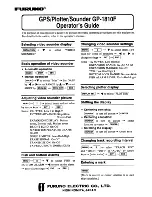
2
CONTENTS
2
INTRODUCTION
3
IMPORTANT SAFEGUARDS
3
RECEIVER
4
INSTRUMENT CONNECTION
6
HANDHELD MIRCROPHONE
6
BODYPACK TRANSMITTER
8
OPENING BATTERY COMPARTMENT
10
SPECIFICATIONS
11
FCC Class B Notice
If your system is FCC Class B, the following applies:
Note –
This equipment has been tested and found to comply with the limits for a Class B digital device, pursuant to Part 15 of
the FCC Rules.
These limits are designed to provide reasonable protection against harmful interference in a residential
installation. This equipment generates, uses and can radiate radio frequency energy and, if not installed and used in
accordance with the instructions, may cause harmful interference to radio communications. However, there is no guarantee
that interference will not occur in a particular installation. If this equipment does cause harmful interference to radio or
television reception, which can be determined by turning the equipment off and on, the user is encouraged to try to correct the
interference by one or more of the following measures:
• Reorient or relocate the receiving antenna.
• Increase the separation between the equipment and receiver.
• Connect the equ
ipment into an outlet on a circuit different from that to which the receiver is connected.
• Consult the dealer or an experienced radio/TV technician for help.
Summary of Contents for PV 1 UHF
Page 1: ...1 PV 1 UHF Wireless microphone system...
Page 12: ...12...






























